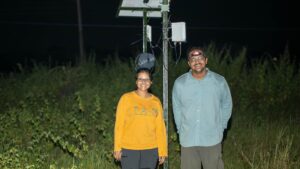UPSC Relevance
GS-3: Environment & Ecology – Biodiversity Monitoring
GS-3: Science & Tech – AI in Ecological Research
GS-2: Governance – Science in Conservation Policy

Key Highlights
System Overview
Name: BatEchoMon (Bat Echolocation Monitoring)
Developers: Kadambari Deshpande and Vedant Barje
Institution: Long-Term Urban Ecological Observatory, IIHS, Bengaluru
Tech: Raspberry Pi, ultrasonic detector, neural network model
Functionality
- Activates at sunset to detect and record bat calls in real time.
- Uses neural networks to identify species, isolating calls from ambient noise.
- Currently identifies 6–7 common Indian bat species.
Significance
- Ecological Impact
- Addresses gaps in bat ecology and acoustic monitoring.
- Shifts from manual to automated call analysis.
- Informs conservation by mapping bat distribution and behavior.
- Technological Advantage
- Portable, modular design suited for long-term use in diverse habitats.
- Challenges and Future Scope
- Limited to 6–7 species due to small dataset.
- Requires expanded reference libraries and testing across environments.
- Plans to scale species library and deploy across Indian ecosystems.
Innovative Edge
- Marks India’s advance in AI-driven biodiversity monitoring.
- Supports data-driven wildlife policies.
- Could inspire acoustic monitoring for other species.




